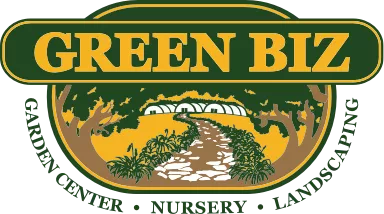Slime Mold on Mulch is a common occurrence when the temperature and humidity both rise. When combined with organic matter, such as hardwood mulch, slime mold flourishes and spreads quickly. While unsightly, slime mold is not harmful to humans or animals. Continue reading to learn more about slime mold on mulch!
What is Slime Mold on Mulch?
Slime mold goes by many names. Some common names are dog vomit, scrambled eggs, and bark barf. Slime mold’s scientific name is Physarum polycephalum. This fungus grows very quickly. So quickly that the yellow form that we notice can grow overnight. Slime mold first appears on mulch as mold that resembles the fuzzy looking mold on bread. It can be difficult to identify or notice if you are not looking for it.
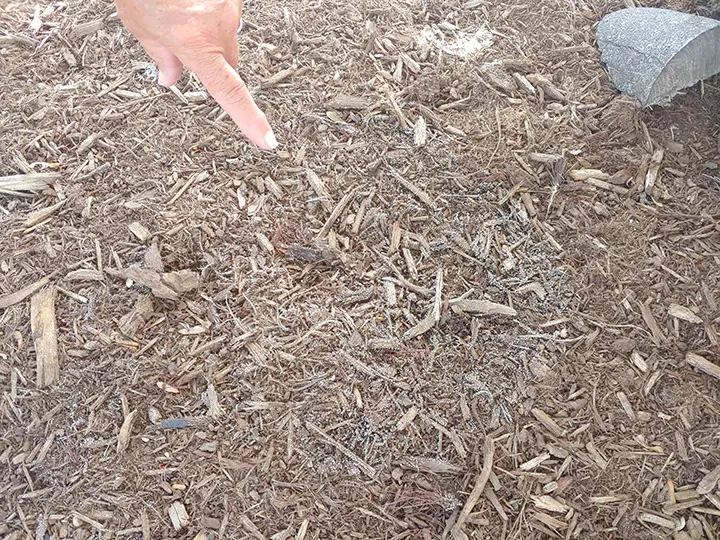
The next form that slime mold takes on is its most grotesque form, the yellow dog vomit. This form is its must unsightly phase. At this point, the slime mold is sticky, slimy, and wet. It is best to leave it alone until it dries completely.
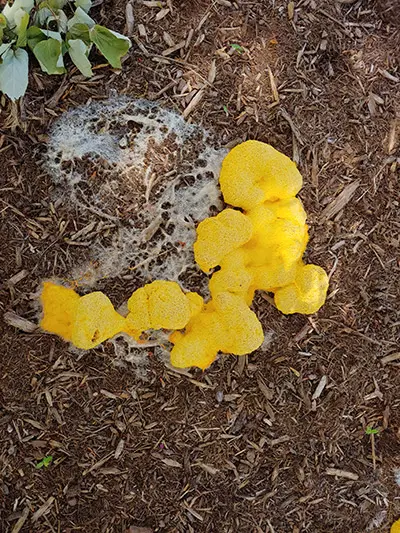
Next, the slime mold will harden and dry out. This process usually takes a couple of days.
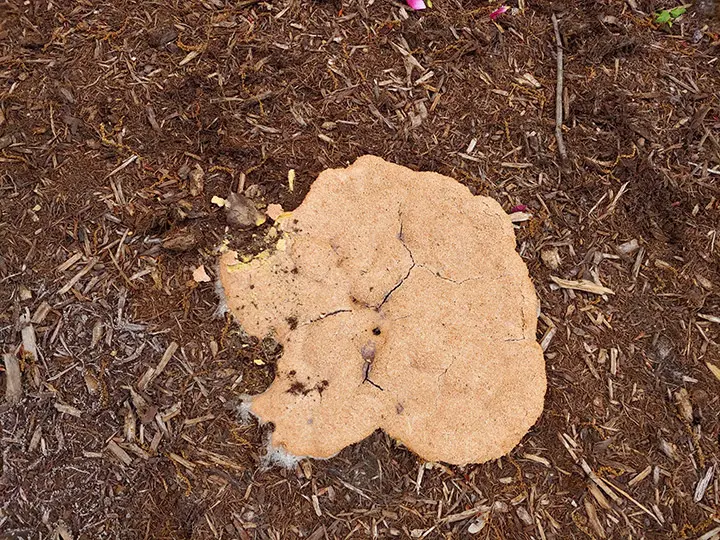
Removal of Slime Mold on Mulch
Once the slime mold is completely dry, you can remove it. It should feel like a dinner plate. Use a trowel to get underneath the fungus, being mindful not to spread the spores.
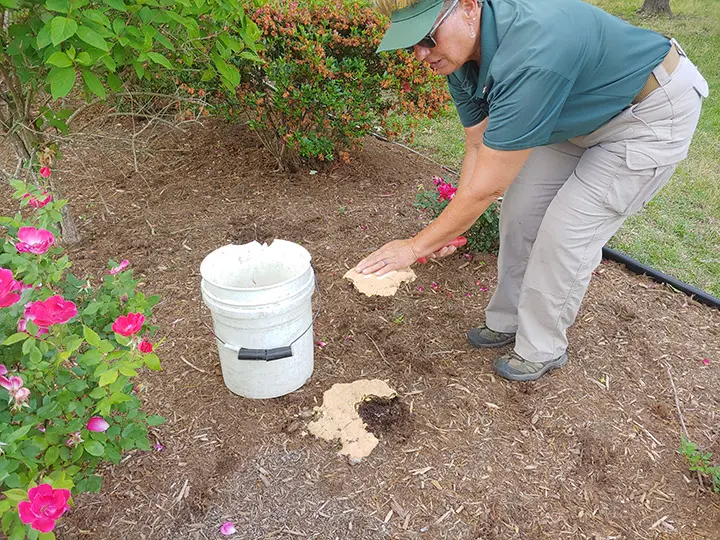
As you remove the slime mold, place it in a bucket to dispose of it. The best way to dispose of the dried slime mold is to burn it.
Again, slime mold is not harmful to humans or animals, or even plants. Sometimes you will see slime mold growing on the base of trees or shrubs, as it likely spread from the mulch.
For more updates, please visit our Facebook page!
